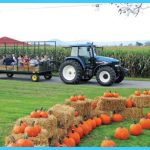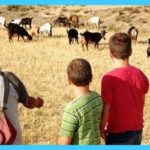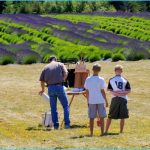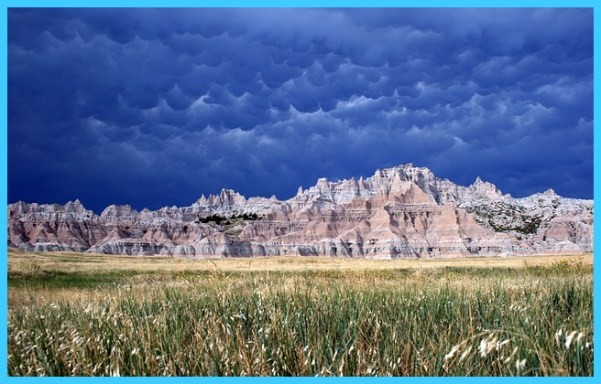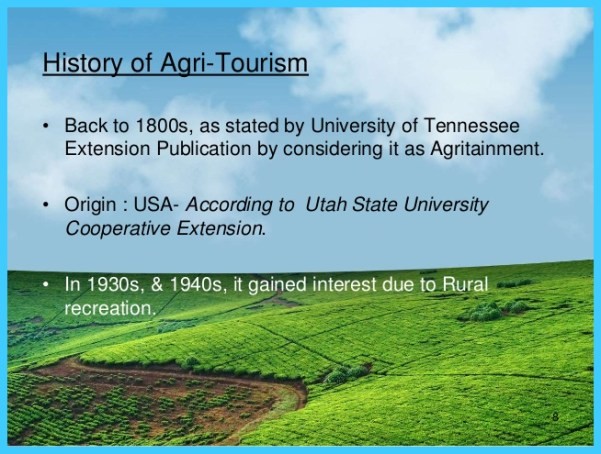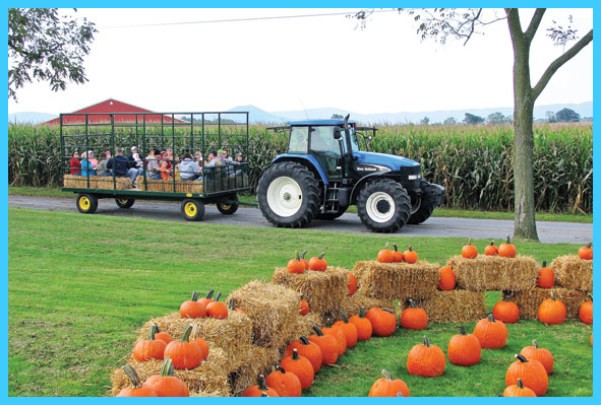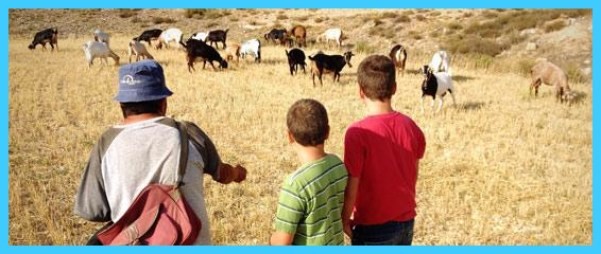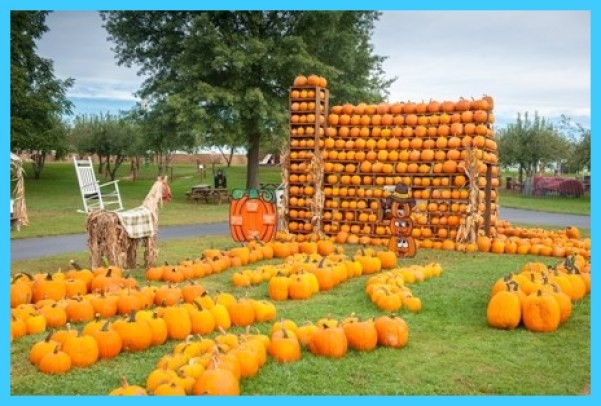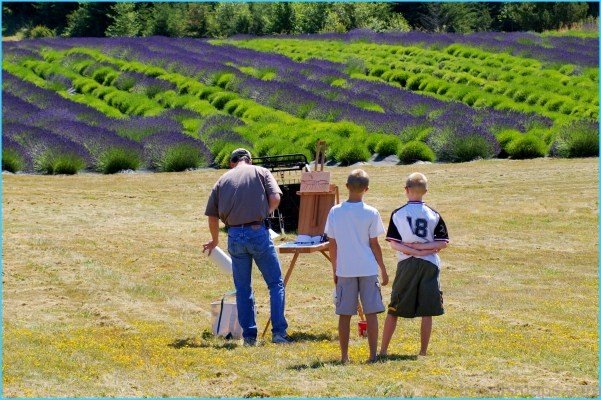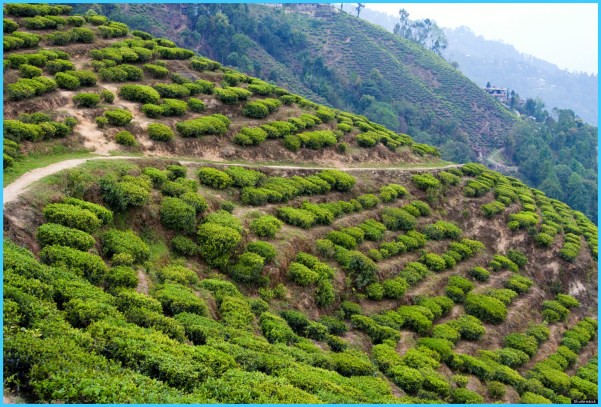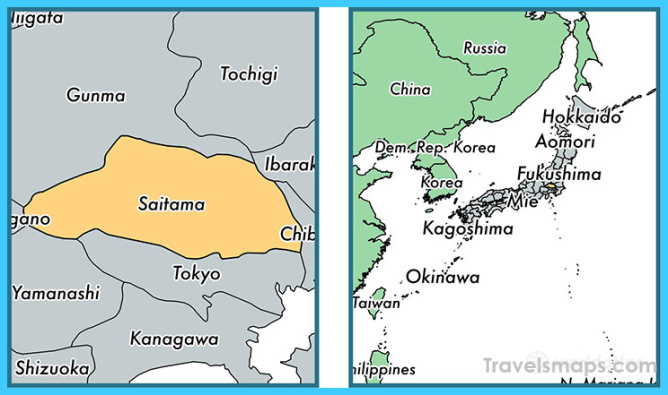Agritourism is a type of tourism in which hospitality is offered on farms – activities range from agricultural festivals to opportunities to assist with farming tasks.
“Increasingly farmers are eking more money out of the land in ways beyond the traditional route of planting crops and raising livestock. Some have opened bed-and-breakfasts, often known as farm stays, that draw guests eager to get a taste of rural living. Others operate corn mazes – now jazzed up with modern fillips like maps on cellphones – that often turn into seasonal amusements, with rope courses and zip lines. Ranchers open their land to hunters or bring in guests to ride horses, dude ranch style. Known as agritourism, such activities are becoming an important economic boost for many farmers.”
The New York Times
Agritourism farms, also referred to as entertainment farms, include any land-based farm or agricultural-related business that is open to the public. Som e agritourism destinations are open year-around, others are only open for a few weekends in the fall.
According to the U.S. Travel Association (USTA, www.ustravel.org), between 20% and 40% of farms in the U.S. are involved in agritourism in some way.
Two online directories (www.agritourismworld.com and www.ruralbounty.com) list farms and ranches open to the public across the United States.
According to the National Survey on Recreation and the Environment, created by the Outdoor Recreation Resources Review Commission (www.orrc.com), 63 million Americans visit farms annually.
AGRITOURISM USA Photo Gallery
Entertainment Farms
Small diversified farms are ideally suited for accommodating tourists. Unlike large-scale production farms, the small farm can re-create a picture of an earlier, simpler ideal of farming. The following are some examples:
Eckert’s Farms (Belleville, IL; www.eckerts.com)
• Family-owned and operated by seven generations of Eckerts since 1837, this is the largest pick-your-own orchard in the United States. Starting with a simple roadside stand in 1910, the Eckert family now operates three entertainment farming attractions in the state. Farms feature children’s activities, annual events, concerts, festivals, cooking classes, and the Eckert’s Country Store and Restaurant.
Polyface Farms (Swoope, VA; www.polyfacefarms.com)
• Near Staunton, Polyface Farms commands $500 for a two-hour escorted tour of one of the most famous family-owned farms in America. The 550-acre farm, which produces healthful, humanely raised pork, beef, and poultry, draws more than 8,000 visitors a year from as far away as New Zealand and South Africa.
Schnepf Farms (Queen Creek, AZ; www.schnepffarms.com)
• Located about 50 miles southeast of Phoenix, Schnepf Farms parlayed a small country store and vegetable garden operation into the largest family entertainment farm in the Southwestern U.S. The Pumpkin and Chili Festival, the farm’s largest event, which runs Thursday through Sunday for four consecutive weekends in October, attracts 30,000 to 40,000 visitors. A Spring Peach Festival attracts similar visits. In recent years the festivals have added train rides, comedy acts, carousel rides, a 20-foot high Witch Mountain slide, hayrides, a corn maze, a blacksmith shop, and other attractions. The farm also leases a 250-acre area for such events as Country Thunder USA, a country music festival which recently hosted more than
150,000 people over four days. There are also campground facilities with full RV hookups.
Smiling Hill Farm (Westbrook, ME; www.smilinghill.com)
• Several dairy farms throughout Maine promote agritourism activities, some drawing over 100,000 visitors annually. One such farm is Smiling Hill Farm, a 12th generation-run farm, where attractions include petting zoos, a center specializing in one-day mini-retreats, and activities for the hundreds of school children per day that visit. Group activities include tours, summer programs, wagon and sleigh rides, Halloween and maple syrup season events, cross-country skiing, and ice skating.
Living history farms demonstrate agricultural practices dating from colonial times to the early 20th century. They typically offer demonstrations and many offer interaction with farm animals. A list of prominent living history farms is provided in Chapter 113 of this handblog.
WWOOF Farms
Created in 1971, World Wide Opportunities on Organic Farms (WWOOF, www.wwoof.org) gives guests the opportunity of a farm stay to learn firsthand where their food comes from. Host farms represent an incredible range of business models and industries, from urban gardens to off-grid rural homesteads, cheesemakers to cattle ranchers, and market producers to retreat centers.
WWOOF-USA (one of 50 independently operating worldwide branches of WWOOF) lists more than 1,500 organic farms willing to provide room, board, and an education in exchange for labor. Members have access to an online database which provides details about farms, including preferred lengths of stay (from a few days to an entire growing season), hours of work expected, and type of accommodations and meals offered. Volunteers make arrangements directly with the host of their choice. Membership in WWOOF-USA has grown to over 10,000 as of April 2016 from only
1,900 in 2006.
Maybe You Like Them Too
- The Best Places To Visit In North America For Christmas
- Faro Travel Guide: Map of Faro
- Mumbai Travel Guide For Tourists: Map Of Mumbai
- Travel to Budapest
- Thailand Travel Guide for Tourists: The Ultimate Thailand Map




